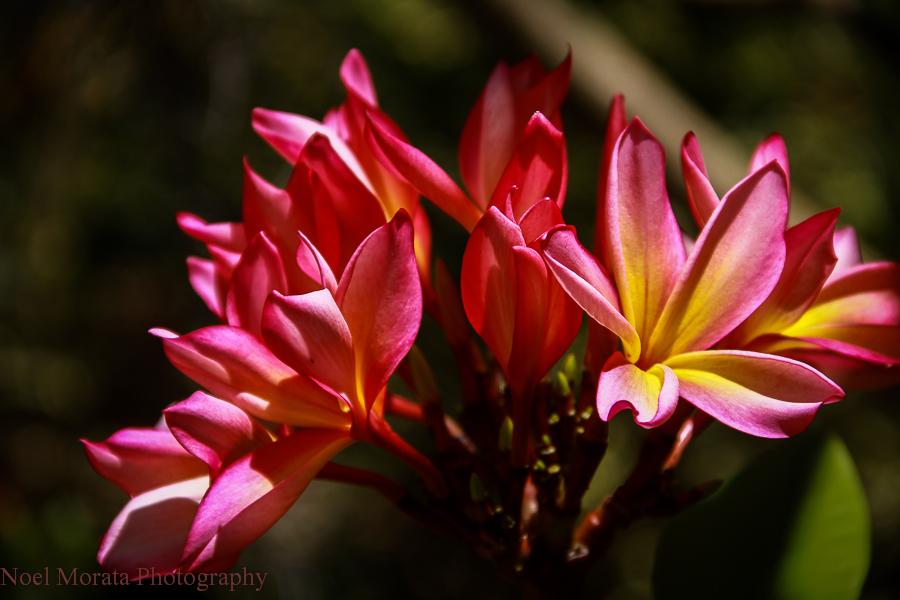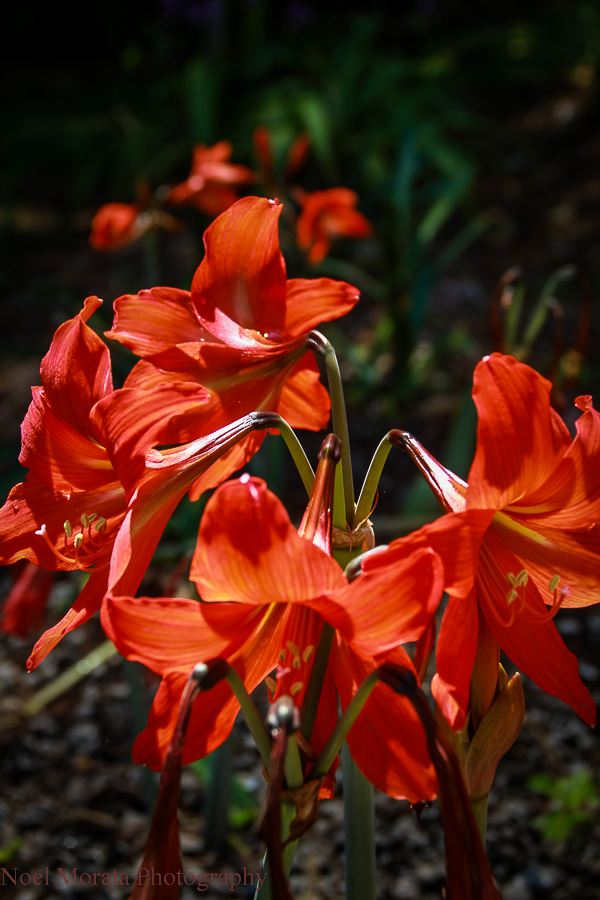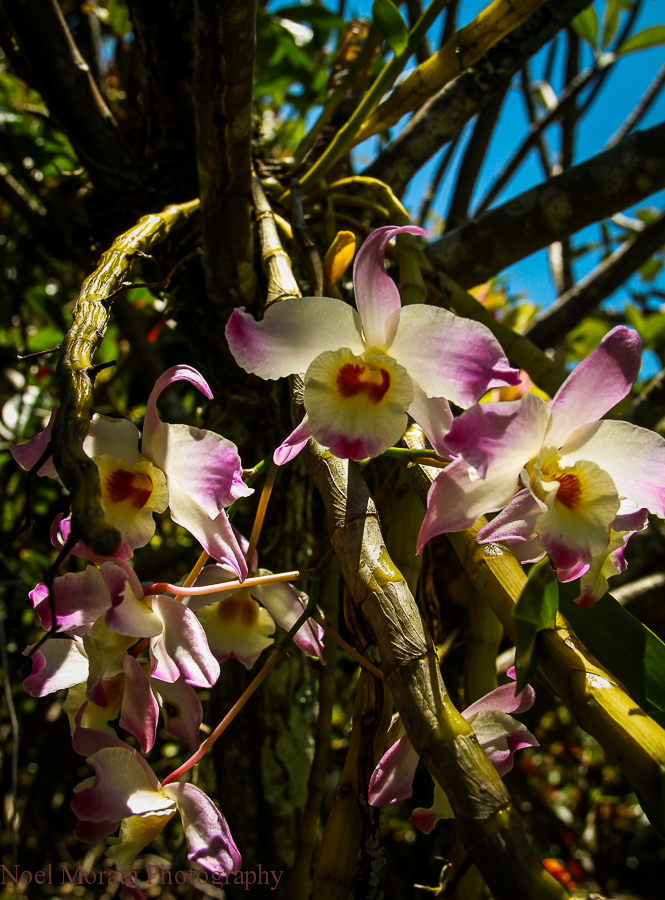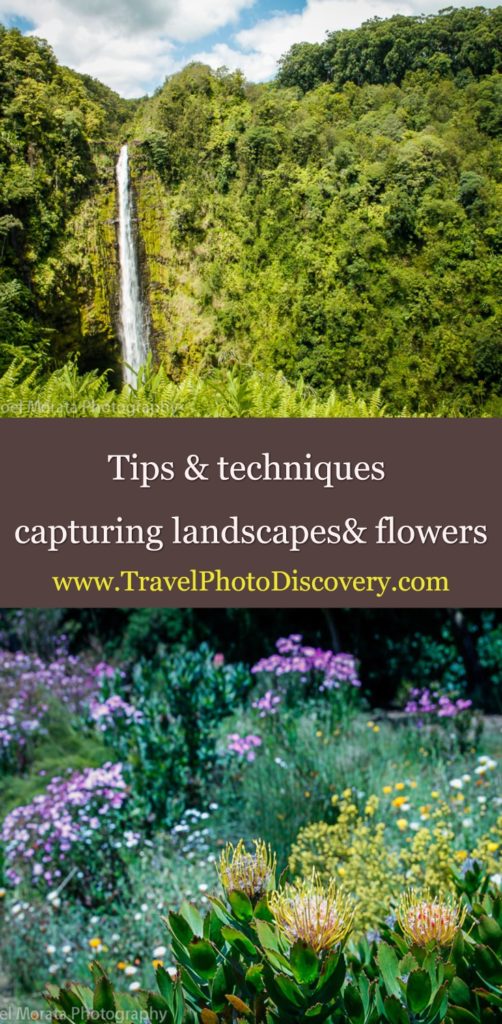Capturing Nature’s Beauty: Discover the Art of Flower Photography, inside tips and techniques
We share our inside tips and techniques to capture natural beauty and the art of Flower photography with ideas on how to make and capture images that just pop and stand out.
With spring already here, its fun being outdoors and start discovering nature and taking beautiful pictures especially on flower photography and some wonderful landscapes you can visit close by. As spring flowers start to come out everywhere, it’s easy to take some flower photography images in the garden, but how do you make your flower photography look amazing?
Nature and flower photography allow us to immerse ourselves in the stunning beauty of the natural world. From delicate petals to awe-inspiring landscapes, capturing the essence of nature through photography is a rewarding and enchanting endeavor. Whether you are a seasoned photographer or just starting out, the art of flower photography opens a world of possibilities, inviting you to explore the intricate details, vibrant colors, and ephemeral moments that nature graciously offers. In this introduction, we will delve into the captivating realm of nature and flower photography, uncovering techniques, tips, and inspiration to help you embark on your own photographic journey.
Fall time is also a fantastic time to explore nature and capture all the amazing colors and beauty in a fall landscape, so make some time to be outdoors and visit places that are really great to visit.
Check out these Flower nature photograph tips on making your images pop and hopefully you can use some of these cool techniques when you want to bring your photography game up a notch.
How to capture gorgeous floral imagery and beautiful landscapes
Nature and flower photography is addictive once you practise and master all these tips and techniques below to create gorgeous imagery. Learn to master many of these easy technical and practical ideas focusing on composition, backgrounds, lighting and other photo techniques you can look out for or easily manipulate, pre-visualize while you develop more camera skills to portray the best of nature and floral photography.
Tip – explore your garden or public gardens at different times of the day and observe how the light looks on these plants and flowers. You’ll notice that capture gorgeous details and scenes are usually not in the middle of the day but in the morning and late afternoon when the light is not so harsh and the golden hour does create a more inviting scene.
Here’s how to make your flowers and landscape photography pop!
There are many easy and simple things you can do to create amp up your flower, plant and landscape photography. Try all these techniques below and you’ll start developing a keen eye for what works personally in your photography.
Get really close to your subject
Of all the easiest flower photography ideas, getting those close up details of a grouping of flowers or even single flower blooms or isolating a single bloom becomes more dynamic and interesting as a composition. Using a dedicated macro lens allows for focusing on objects with all the fine details. Another alternative would be to use a telephoto lens with zoom to focus on your subject in a focal range you are happy with.
Cropping out distracting elements
When you do detailed photography of flowers in a presentation make sure to find simple backgrounds or clear up your background from cluttered distractions. You can easily move things around by changing positions of where you are taking the photograph and looking at different angles and places to focus on your subject. Try to crop out distracting or glaring details in the background and make those compositions tighter. Re-compose your images constantly to find the best compositions, take out unnecessary details and train your eye better to create more interesting viewpoints. Last, don’t be afraid of zooming tighter to get a close-up of your subject, your audience will spend more time looking at all the details in your photograph.
Use a shallow depth of field
Along with cropping out distractions and doing close-up images, changing your f-stop on digital SLR cameras to a shallow depth of field (usually around f2/8 – f/4, anything in a low aperture range) will make the backgrounds blend in and become softer. This in turn creates a pleasing background, and makes the subject pop out from the composition.
Focus on sharpness
If your main focus is on the flower, concentrate on highlighting the key details with your autofocus, and make sure they are spot on sharp. Target your autofocus directly on the main subject and then recompose the image to create a more pleasing composition. Larger groupings will require a bigger aperture like a f/9 to f/11 setting to get all the various details into focus so change your apertures accordingly. For selective focus, try switching to manual mode so you can manually focus sharpness to the appropriate areas of the subject that you want to highlight.
Using a tripod especially in macro flower photography is helpful and using a remote release also helps tremendously in keeping the camera solid and stable.
Photograph on cloudy overcast days
Cloudy days are perfect for nature and flower photography because it creates an even filtered light on your subject so this is a great time to work on flowers, nature and isolated outdoor images that you want to capture. Even light compliments the flower details and its delicate features, eliminating harsh shadows or bright hot spots on your subject.
Try for backlighting your images
Backlight happens when the sun is directly in front of you and lights up the subject from behind. Flowers that are delicate and translucent, create a wonderful glow effect that brightens up the subject and creates a dynamic and glowing composition. Just make sure when you try this technique that you avoid any glare or flare-ups occurring to your camera lens and distracts from the overall image.
Try photographing during the ‘Golden Hour’
One of the basic nature photography ideas is to shoot during the Golden Hour. The early morning or early evening hours when the sun is close to the horizon presents the best warm light on any subject including plants and flowers. Try shooting during this timeframe when the golden light is happening, it is the best time to be outdoors and find some interesting subjects to photograph. Take the time to study how the light hits your subject, experiment, find the best angles to shoot and your photos will look incredible.
Avoid windy days
Windy days are very difficult to capture detail or macro images of flowers and its best to avoid taking pictures in this condition unless you are going for a different effect on your photography. The best situation is to take pictures of your subject in a protected area away from the wind or try a different timeframes (like mornings) when the wind factor is minimized. Last, take photos of your subject indoors if you can bring your arrangements or any subject indoors.
Create a different viewpoint
Trying different angles and perspective will create more interesting and dynamic imagery to your subject. Photographing flowers from above, the bottom, behind, backlit or any other interesting angles will create a different take from the typical formats and will create better presentations. This is a great way to experiment and train your eye to see things differently and create unusual or interesting viewpoints with your photography. Looking at flowers from different vantage points and capturing something unique makes your images fresh and more exciting to view than the standard approaches to photographing flowers and plants.
Light it up
Any flowers that are in shade or in boring flat light can be lit up using reflectors or flash to add highlights and depth to the subject. Try to find the right balance of shade and light to best focus on your subject matter whether it is lit naturally or with other tools to highlight your subject.
This is a great time to be outdoors and enjoy nature, wildflowers or the beauty of a garden. Go outside, find something inspiring and enjoy experimenting with your camera. Try out any combinations of the techniques and tips mentioned above and your presentation and photography skills will improve. Last, take a look at this earlier post I wrote earlier focusing on general tips on travel photography, using your camera and composition.
Photograph en masse
There’s nothing like capturing a whole field of wildflowers when the timing is perfect. Part of this situation requires planning ahead of time, checking to see where the wildflowers are starting to make an appearance and planning a time to actually go out there to shoot. when you make a little effort and plan the details, you’ll really be inspired to go out explore and be creative. It just takes a little bit of time and research to get you where you have all of the right opportunities to photograph something unique or inspiring.
Practise makes Perfect in your learning and photography
In the realm of photographing flowers and nature, the adage “practice makes perfect” holds true. Capturing the delicate details of a flower or the ethereal beauty of a natural landscape requires patience, skill, and a keen eye. With each session behind the camera, we refine our understanding of lighting, composition, and the nuances of nature. Through practice, we learn to anticipate the perfect moment to capture a dewdrop on a petal or the play of light through a forest canopy. We experiment with different angles, settings, and techniques, discovering what works best to convey the essence and magic of the natural world. It is through repeated practice, trial, and error that we develop our unique artistic style, mastering the art of nature and flower photography. So, embrace the mantra of “practice makes perfect,” and let each click of the shutter bring you closer to capturing the breathtaking beauty of flowers and the wonders of the natural world.
Hopefully these ideas and techniques will help you to practice and focus on your techniques and do this on a regular basis. Practice and experimenting constantly will help you to develop your eye and composition techniques in your nature and floral studies.
Photographing landscapes
This is where you really want to plan and research places near or a dream vacation that has stunning visuals. You can find some inspiration depending on your availability and location. Photography is a great way to enjoy and explore the places you visit. Experimenting with any of the techniques above will help you in creating stunning visuals as well as capturing the envionmental shots to really show a sense of place with people, animals and the landscape to highlight your photography captures.
Check all of these other Photography topics on the blog
Black and white photo tips for beginners
Capturing street images – some photo tips and techniques
15 photography tips on your road trip
Photography tips for grey sky or rainy days
Flower and nature photography – tips on making your images pop
Photographing people – some tips and techniques
Photography tips for travel Photography
Travel photography – what to pack
Photo tip – backlighting your image
Food photography – making your images pop
Please pin this for later
Conclusion on Flower and nature photography tips and techniques
In conclusion, nature and flower photography provide a remarkable way to connect with the natural world and express our creative vision. By capturing the delicate intricacies of flowers and the awe-inspiring landscapes around us, we can preserve fleeting moments of beauty and share them with others. Through patience, observation, and a deep appreciation for nature’s wonders, we can continue to hone our skills and discover new perspectives. So grab your camera, venture into the outdoors, and let the magic of nature inspire your photographic journey. With each click of the shutter, you have the power to create art that celebrates the splendor of the natural world.
I hope that this was helpful and you enjoyed this post with Flower and nature photography: tips on making your images pop. If you have any other photography tips or observations to share along with this post, please feel free to add your comments below for our readers to learn better photography techniques and skills.
If you like what you see, come and check out my other social media channels for more updates, including Instagram, Pinterest and Twitter








thx for the great tips, i usualy use soem water drops when i photograph flowers, it adds shine and make them look fresher…
Great tips as always. I love playing with the depth of field- but need to experiment with lighting and other perspectives.
Thanks for sharing your professional tips and your photos that prove you really know what you’re talking about. Beautiful shots! I find that flowers and plants can be some of the hardest subjects to shoot sometimes.
Really nice tips. Thanks for the share! My favorite subject is people, but flowers are a close second.
Amazing Tipe Noel..Thanks for sharing,being a newbie in Photography this is going to help me a lot.. 🙂
Beautiful Photos. Thanks for your generosity. I would like to know how you put your name on the photos themselves to ensure copyright.
Its the software I use called Lightroom, its my watermark
Great tips Noel. Such colourful blooms.
Great tips! Flowers are one of my favorite subjects.
Wonderful tips! I love to photograph flowers, but my photos never turn out quite as good as yours.
Sometimes I sprinkle a little bit of water on flowers etc…just to give that little “dew” effect. Great tips!
Yes adding some water element works well into a floral composition, great additional tip.